When Mattel decided to monetise their He-Man toyline and animation, they probably didn’t anticipate the box office disaster that a live-action feature would cause. The licence rights were owned by Mattel, who contacted Cannon Films to make Masters of the Universe.
Cannon Films was a burgeoning production company recognised for spectacular B-Movie hits as well as a few Oscar nominations. Cannon, on the other hand, had no prior experience bringing a comic or toy character to life. What was supposed to be a $22 million project barely made $17 million.
Many circumstances contributed to the film’s unfortunate demise, including director Gary Goddard’s inexperience, who was solely renowned for his work as a theme-park director at the time. And, although having a large budget by Cannon’s standards, the money was not used wisely.
While certain settings, such as Castle Grayskull, were luxuriously extravagant, a few moments were shot in weak light due to a lack of funds to present better sets. Many original characters, such as Orko and He-Battle Man’s Cat, were also absent from the film.
Nonetheless, Masters of the Universe has become a cult classic over time, and we felt it was important to pay He-Man and his history the attention they deserved. The sequel to Masters of the Universe was supposed to be out in 2019, but it’s already been postponed twice and is currently stuck in post-production hell. In this video, we’ll go over some of the most amazing, yet tragic, facts of this 1980s film.
Filming Was Shut Down Early
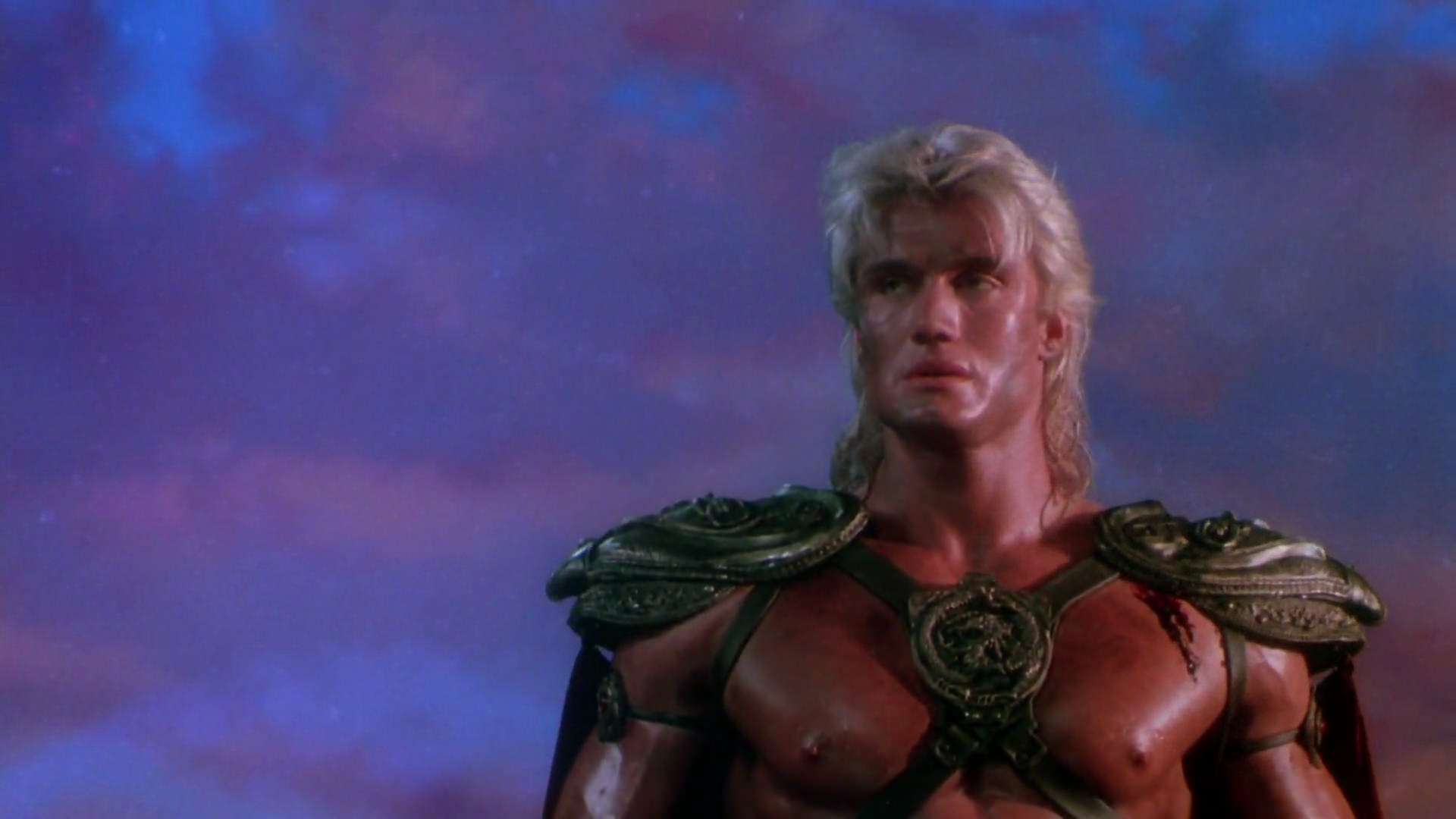
When it came to production and post-production, Cannon Films and the duo of Yoram Globus and Menahem Golan experienced a string of misfortunes. Blood Sport, as you may recall, sat on the shelf for more than two years before being published.
With Masters of the Universe, something similar happened. Despite the fact that only three days of photography remained, Golan and Globus asked filmmaker Gary Goddard to cease shooting due to budgetary concerns.
This left Goddard in a fix as the climactic battle between He-Man and Skeletor hadn’t been shot yet, and without it, it was impossible to release the film. Goddard was relentless and he successfully convinced Globus and Golan to salvage funds from other projects in order to resume. When things finally resumed after a lag of two months, the final showdown was shot hastily and it reflects on the screen.
However, Goddard at least made sure that Master of the Universe saw the light of day. Speaking of light, why do you think the climactic fight looks so dark? The film explained that when He-Man and Skeletor’s swords met, the sheer power of them sucked all the light.
However, the production was short on cash and had to shoot in a dimly lighted set. Cannon Films had put $22 million into the project, so it’s difficult to comprehend why they didn’t want to finish it.
Dolph Lundgren’s voice was almost dubbed over by another actor
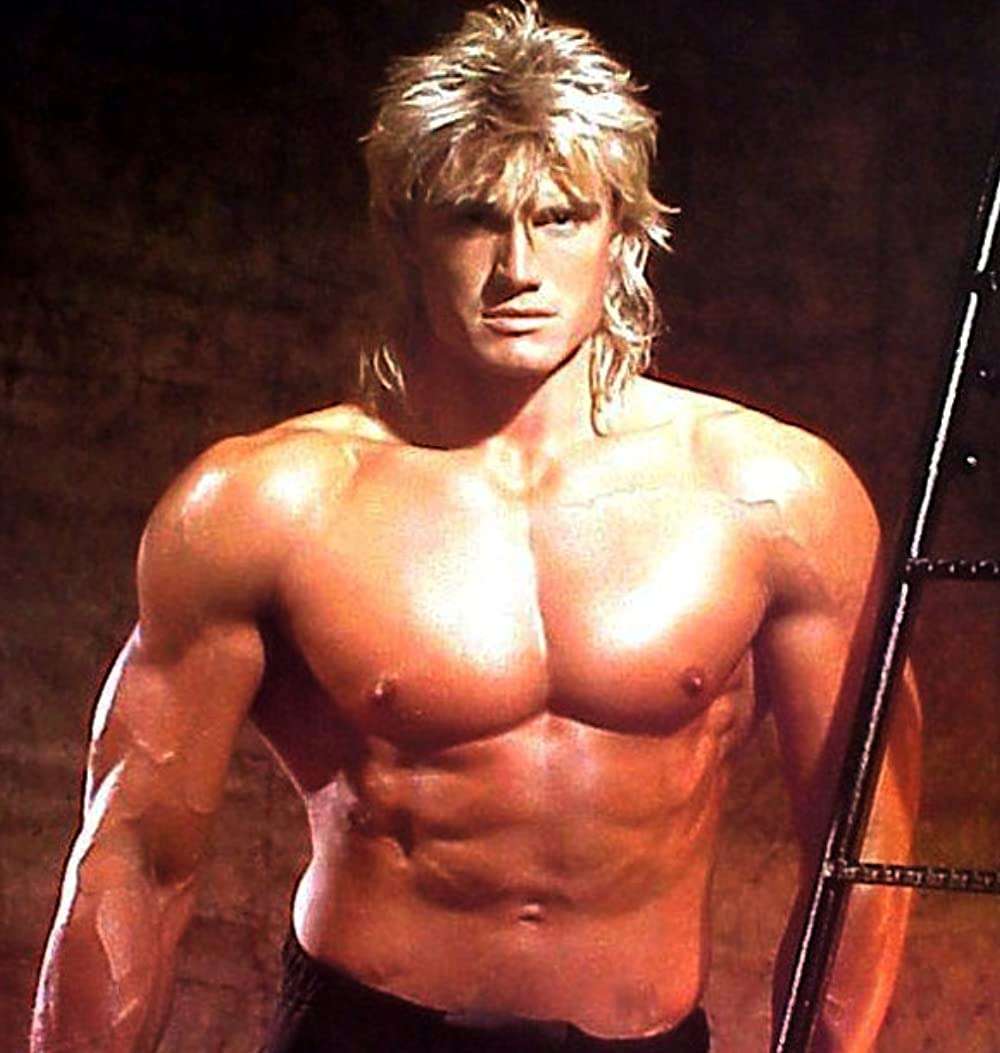
So, Dolph Lundgren, a Swedish strong man, plays He-Man, and when he spoke English, he had a significant accent. Lundgren had only two parts under his belt before to Masters of the Universe. Dolph looked like a fantastic He-Man but didn’t sound like one, which worried Director Goddard and the Mattel executives.
It was fine for He-Man to have a stutter, but it would be disastrous if the audience couldn’t understand him. Goddard and others wanted him dubbed, and three voice artists were auditioned for the role. Dolph, on the other hand, claimed that his contract said that he had three opportunities before being replaced.
After a lot of effort, Dolph managed to deliver the lines in a fashion that was acceptable to Goddard. Also, Menahem Golan was in favor of using Dolph’s original voice, probably because he didn’t want to take the risk of shabby editing. Nevertheless, Dolph got to keep his voice and should thank the three chances.
She-Ra was originally going to feature
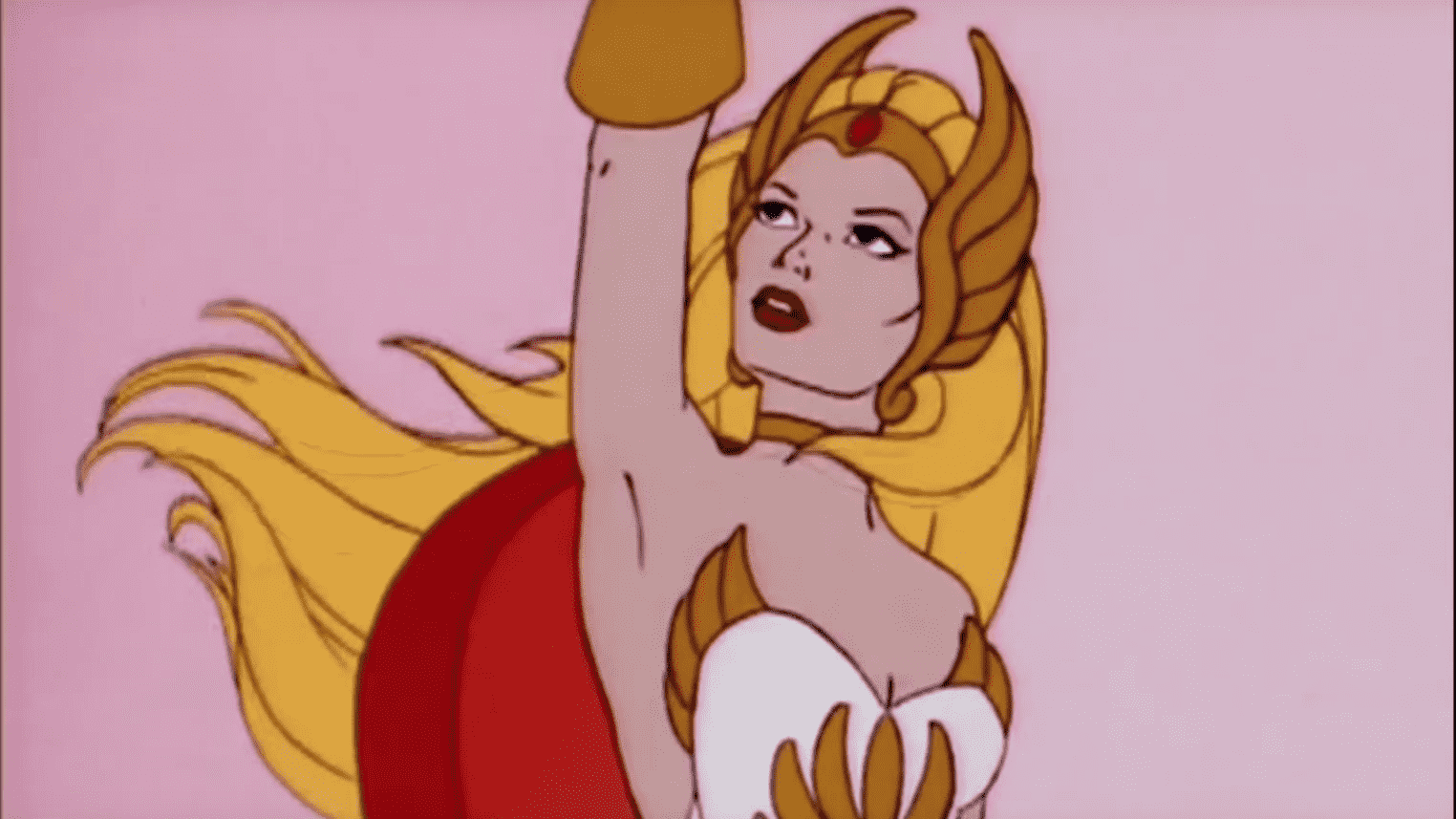
She-character Ra’s was designed by Filmation and Mattel to appeal to a young female audience in the same manner that He-Man attracted to young males in the 1980s. She was quick and powerful, yet she was also sweet, gentle, and attractive.
She initially appeared in the 1985 animated series She-Ra: Princess of Power, where she was shown as He-lost Man’s twin who had been separated when they were infants. She-Ra attracted both boys and girls to the 1983 show He-Man and the Masters of the Universe, despite the fact that her character was designed to appeal to young girls.
However, director Gary Goddard thought she would steal He-Man’s thunder and he wanted He-Man to be the center of attention in the first film. Goddard wanted She-Ra to appear in a sequel to Masters of the Universe, but of course, that didn’t happen.
Interestingly, the sequel to Masters of The Universe was re-written into the 1989 cyberpunk film Cyborg that starred Jean-Claude Van Damme. Naturally, She-Ra’s character was transformed into Nady Simmons, and was played by Deborah Richter.
The Grayskull Set Was The Largest Constructed In Over 40 Years
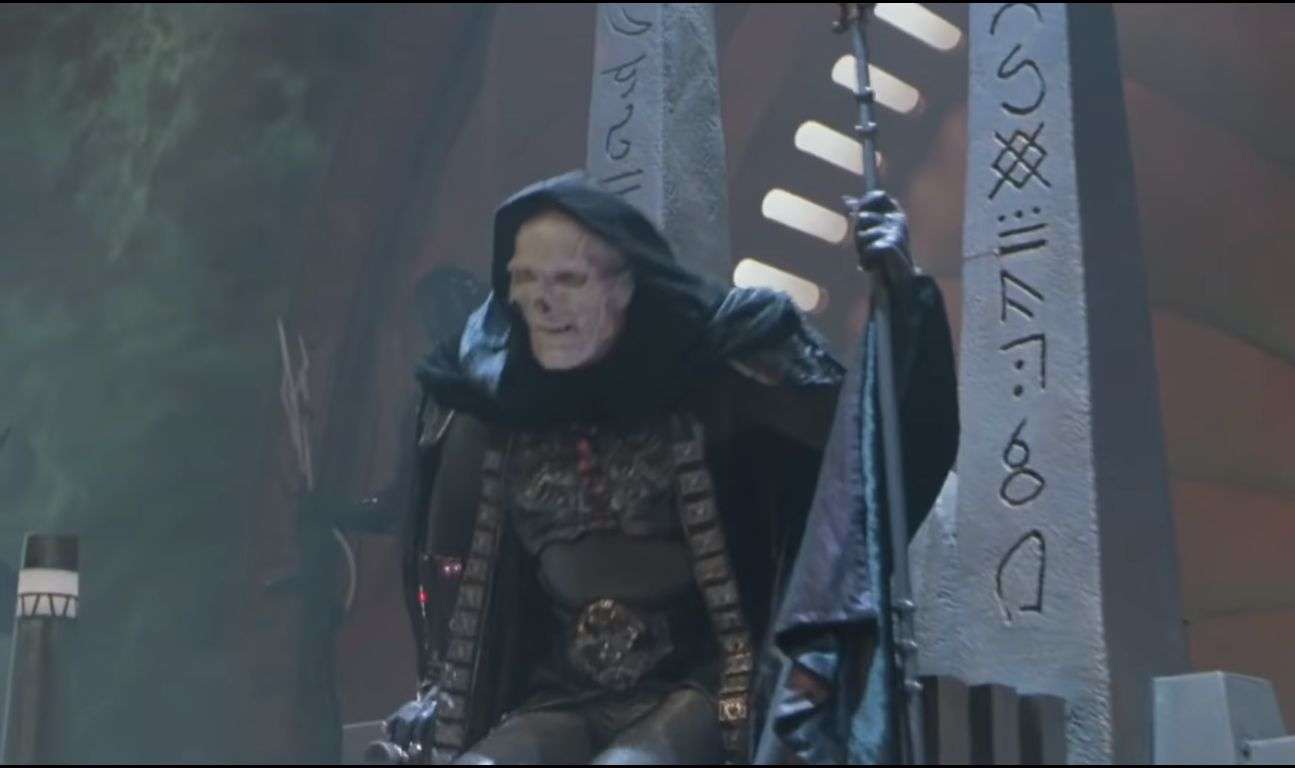
The Throne Room of Castle Grayskull was meant to be the centre of the universe’s power. A worthy and appealing set was required for such a magnificent location. Though production designer William Stout had to make sure that the cinematographers didn’t have a hard time capturing the beauty, it had to be big and inventive.
There wasn’t a one location that was big enough to film Caste Grayskull. As a result, the crew destroyed a wall between two massive soundstages. This new room was vast, and it was the largest set built in more than four decades.
Another impressive thing about the set is its environment that reflects both good and evil. This was necessary to define the dual-natured power that resides in the throne. To achieve this, Stout showed immense creative genius and created a two-layered layout.
The upper level had a bronze statue that represented the good and divine nature of power and the lower layer signified the more demonic side by the use of gargoyle-like figures.
They tried out 20 possible He-Man costumes before settling on the right one
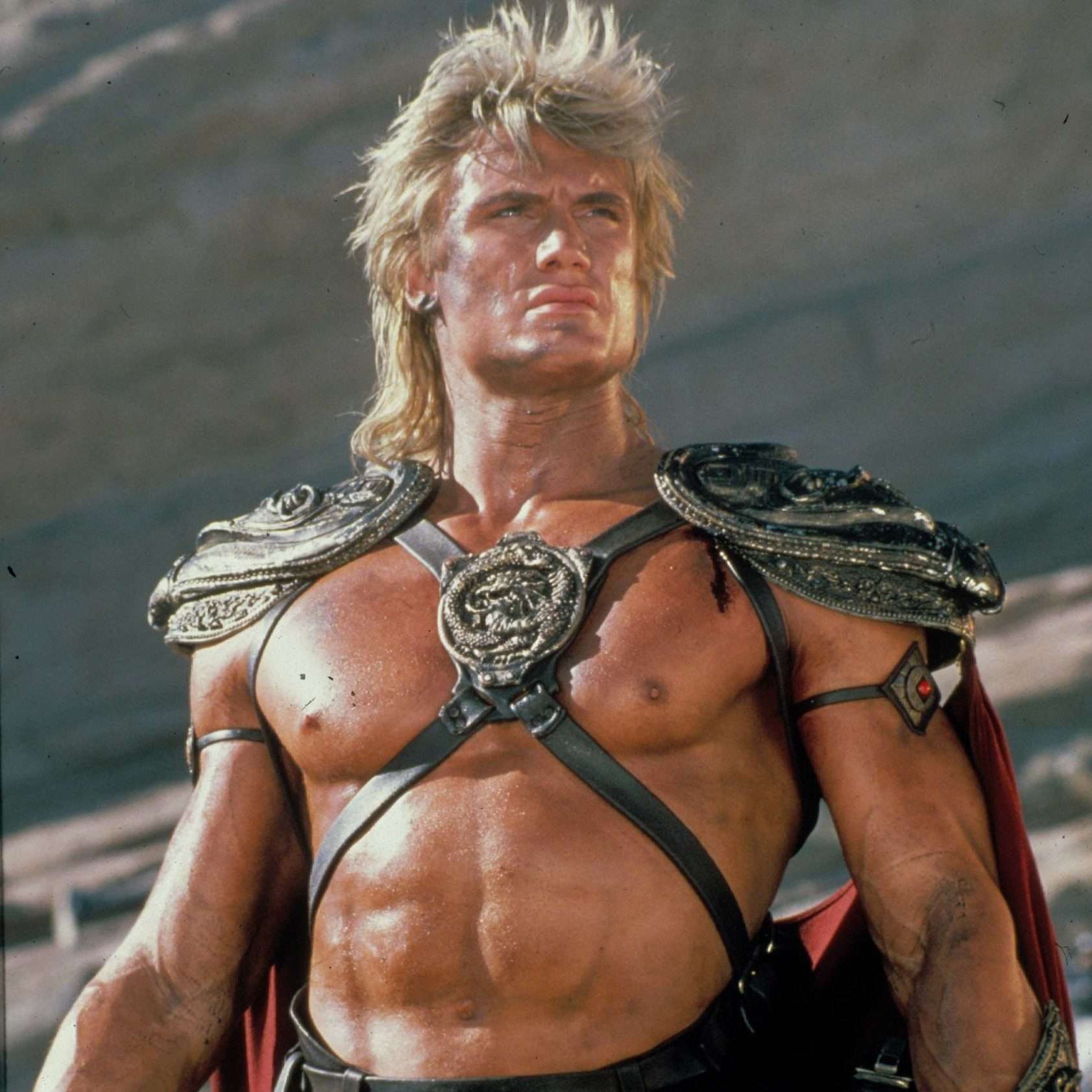
While it had the potential to be a legendary He-Man film, Masters of the Universe had to settle for being a cult classic. This can be linked to a variety of factors, including the absence of numerous beloved cartoon characters, the incompetence of certain actors, Gary Goddard’s inexperience as a filmmaker, and so on..
Nevertheless, we can certainly give credit where it is due to Goddard and his costume designer, both of whom took creative liberty in redesigning several characters, including Skeletor. However, the most crucial of these designs was that of He-Man himself.
They tried over twenty costumes to fit and finally settled on the one that Dolph Lundgren wears. He even tried to add Kickboxing shoes instead of the long knee-high boots that we see on screen. Dolph insisted on wearing the kickboxing shoes, so costume designer Julie Weiss called production designer William Stout in a panic.
When Stout came, he informed Dolph that while the shoes were beautiful, he thought they looked a little too feminine on him. Dolph immediately removed them and replaced them with the long ones.
The remainder of the actors was dissatisfied with the costumes; for example, Beastman, played by Tony Carroll, couldn’t close his mouth in costume due to his teeth. Second, Meg Foster’s Evil-Lyn costume was 45 pounds heavy.
Meg Foster’s Evil-Lyn costume weighed 45 lbs
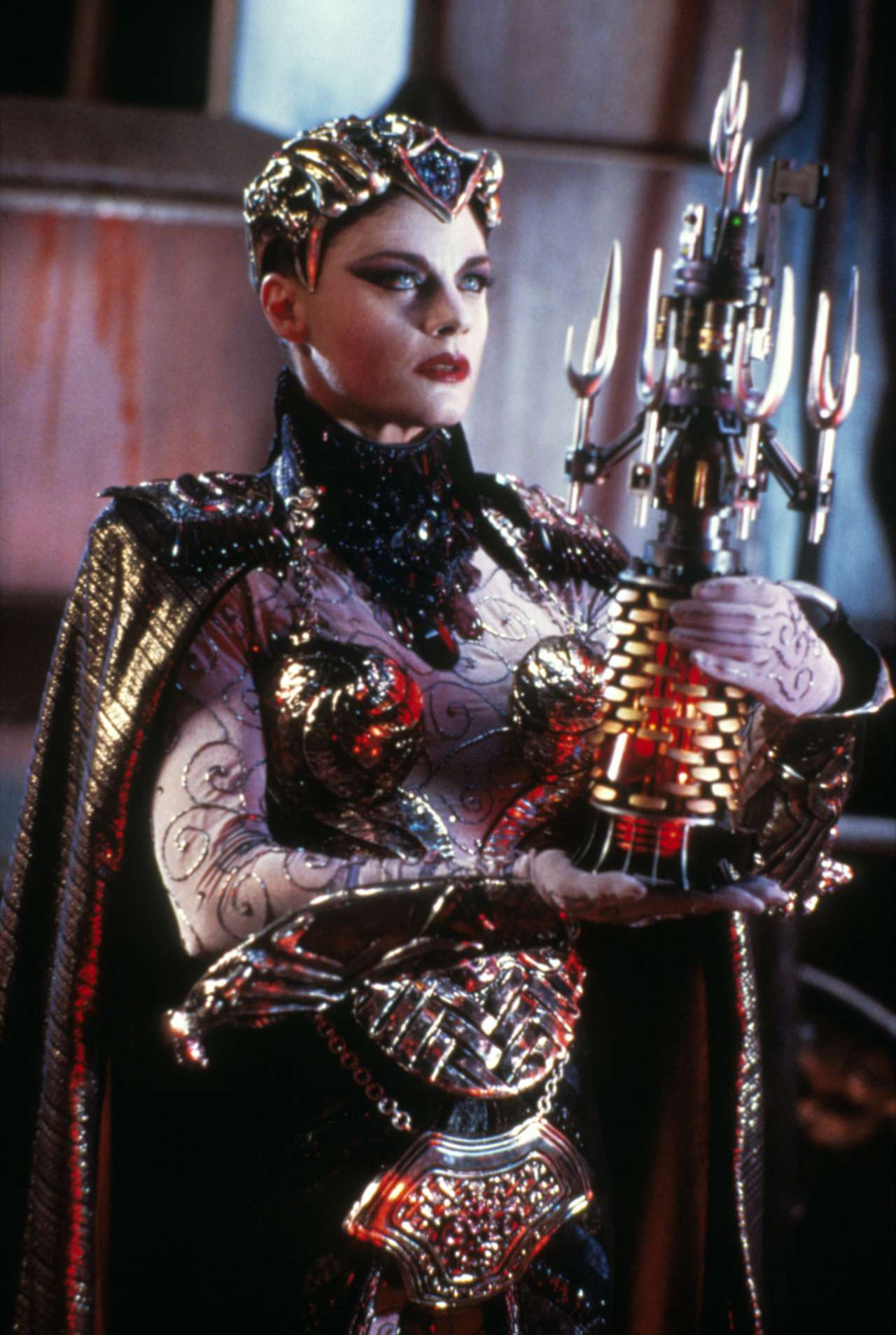
Since we’re on the issue, it’s worth mentioning Meg Foster’s extraordinarily heavy costume and the difficulties she faced while wearing it. Due to the weight of the outfit, she developed bruises around her groyne. It severely limited her basic movement and made her body stiff, albeit she made the most creative use of her limitations.
We always see her standing in the movie, which was due to her hefty suit and the massive fibreglass breastplates. To summarise, her slinky stance, which appears to be the outcome of creative ability, was the result of discomfort during filming.
The film was so unsuccessful it led to the collapse of Cannon Films
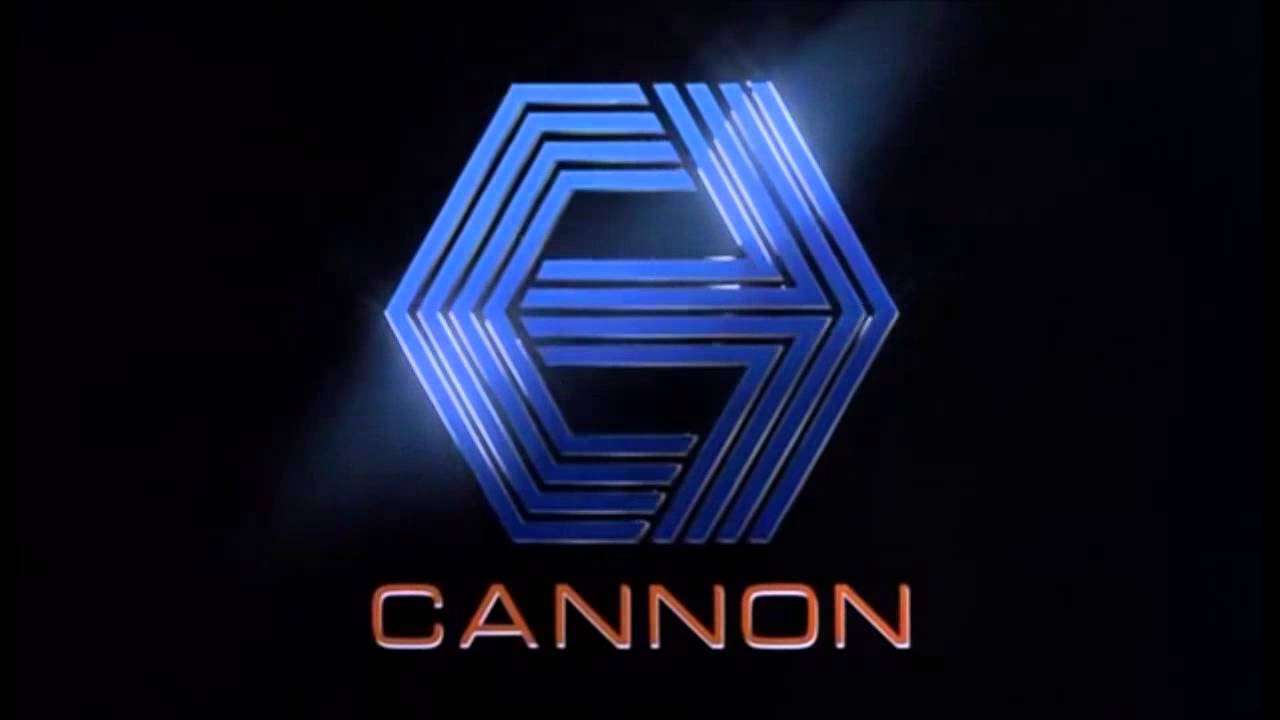
Cannon Films was a well-known production company throughout the 1980s. The flamboyant Menahem Golan and Yoram Globus started out making low-budget B-movies, but as time went on, they began creating big-budget films, at least in comparison to other films released in the 1980s.
While most production companies would release one or two films per year, Cannon Films would release several, and not all of them were commercially successful. Masters of the Universe cost Golan and Globus $22 million to produce, and the picture was beset by financial problems long before its premiere. They had lost roughly $5 million and were in dire straits.
Another overambitious project that they undertook was Superman IV: The Quest for Peace. It shared the same fate as Masters of the Universe. These two big blows left them almost bankrupt. Fortunately, sense prevailed and they released Bloodsport in 1988. It was made over a budget of $2 million and grossed around $50 million.
Few know that the production company owned the rights of Spiderman for a brief period. But the damagedone by ‘Superman IV: The Quest for Peace’ and Masters of the Universe was irreversible, and by 1994, Cannon Films was dead.
Anthony De Longis trained Dolph Lundgren to use a sword
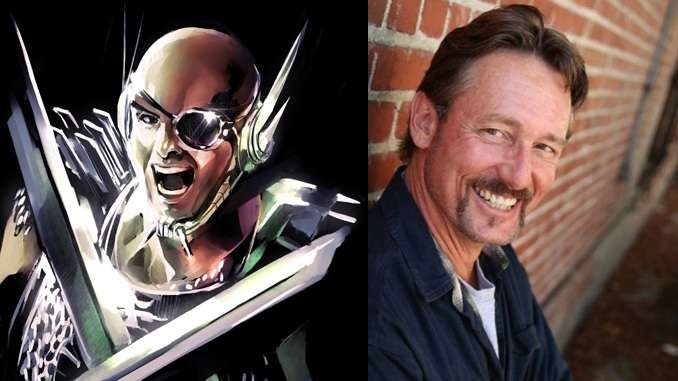
Anthony De Longis is a jack of all crafts who also happens to be a master of them all. Apart from being an actor and a voice-over artist, he is a stuntman, fight director, whip master, horseman, bladed weapons specialist, and trainer. He has worked with a number of well-known performers, including Harrison Ford, Michelle Pfeiffer, Jet Li, and Tom Cruise.
He is credited in a number of episodes of Masters of the Universe. Apart from playing Blade, one of Skeletor’s greatest warriors, he also choreographed the fight sequences between Blade and He-Man and Skeletorand He-Man. In the final showdown, Anthony also filled in as a stunt double for Frank Langella, who was playing Skeletor.
Anthony knew his way around a sword and was asked to train Dolph Lundgren for the fight sequences. Anthony revealed that sparring against Dolph and training him for the bouts was a fun task because Dolph was already a trained kickboxer and an exceptional athlete.
Like Meg Foster, Anthony’s costume was quite heavy. The several chainmails around him weighed about fifty pounds, but Anthony didn’t let the weight take a toll on him whenever he was on the screen as Blade.
Anthony, for some reason, despised being in the makeup chair, so he was offered the option of getting Beastman’s makeup or going bald. We are pleased that he picked the latter option.
He-Man Wasn’t Allowed To Kill Anybody
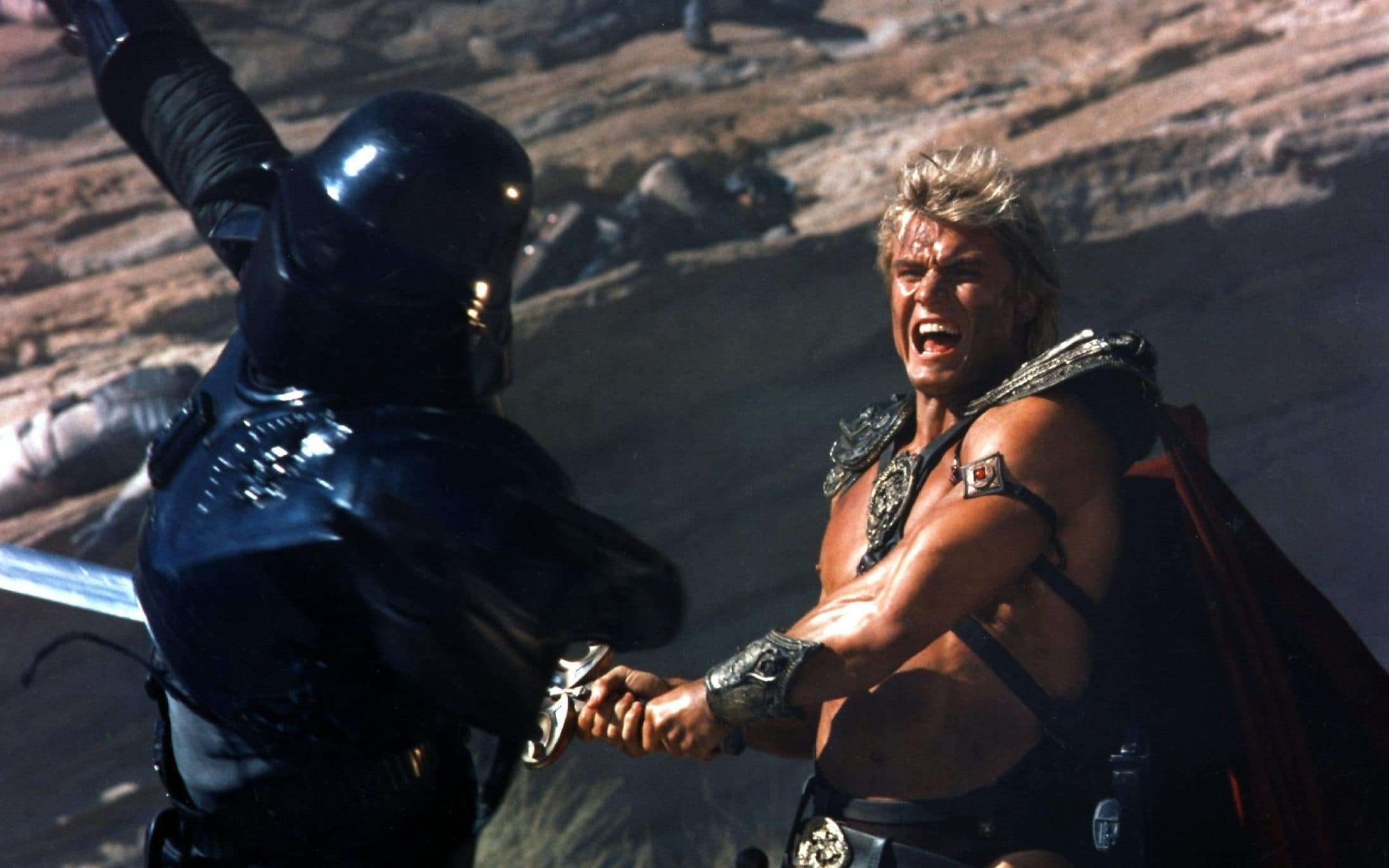
All of the Masters of the Universe characters were licenced to Mattel. Because the movie was based on a toy line, Mattel insisted that He-Man and his companions not kill anyone in real life. This left Goddard in a difficult situation, as the audience would anticipate their favourite superhero to slice a slew of evil men with his sword.
Mattel executives, on the other hand, had made their intentions extremely apparent. We don’t witness He-Man, Man-At-Arms, or Teela killing any live thing, of course. To compensate for this, Goddard thought of filling the ranks of Skeletor’s army with hordes of robotic troops, and the good guys would quench the audience’s thirst of violence by slashing these robots. The existence of He-Man on the same lines as Robots seemed a bit peculiar, but Goddard did his best toavoid making things look cringy.
Gwildor Was Created to Replace Orko
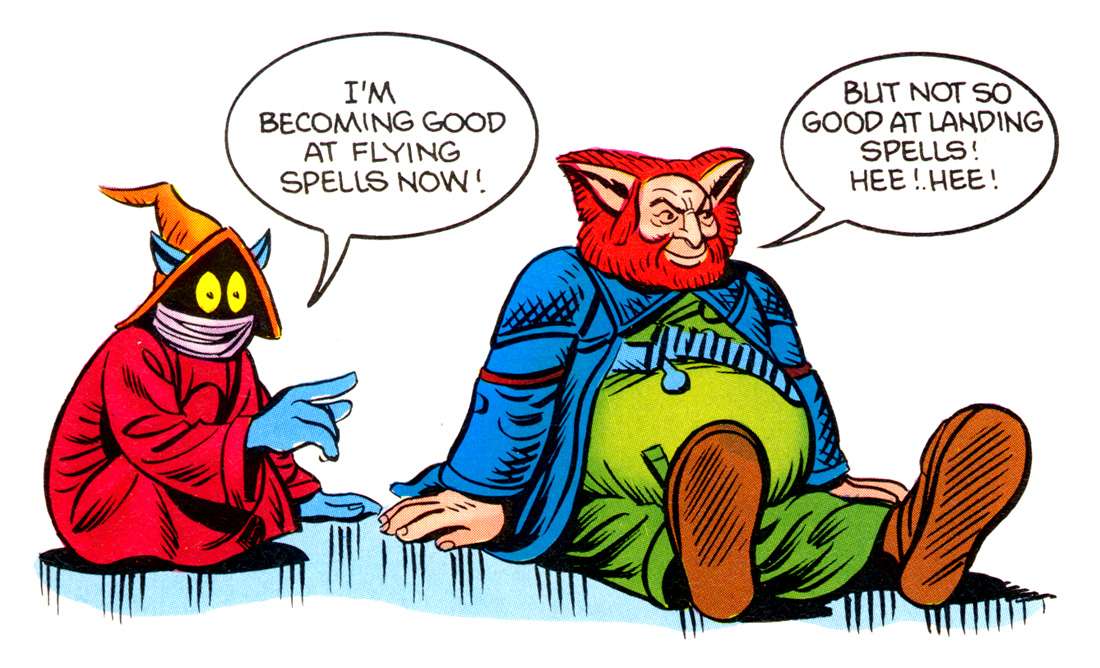
He-Man supporters were turned against their own hero for reasons other than ineffective direction and lacklustre performances. In Masters of the Universe, many of your favourite characters were missing. Orko was the most tragic of them all. He was replaced by Gwildor, a new character played by Billy Barty.
Orko was a comic relief character who came from a mystical Trolla race, and whenever he tried to use his power, it always went wrong. He was humanoid, but he wore red robes and a red turban, and he had blue skin.
One of the main reasons Orko was not included in the film was that portraying him would have cost the producers far more than they could afford. Orko was a Trollan and they essentially levitated instead of walking.
Cinematizing this was not economically feasible, and Goddard went with creating Gwildor instead, who served the duties of Orko but belonged to the race of Thenurians. He looked like a mix of dwarfs and elves with a hefty amount of facial hair and elongated ears.
He conveniently walked on both legs and instead of being an expensive magician, he was an economic inventor. Another missing but highly loved character that disappeared like Orko was He-Man’s Battle Cat.
Dolph Lundgren Did All His Own Stunts
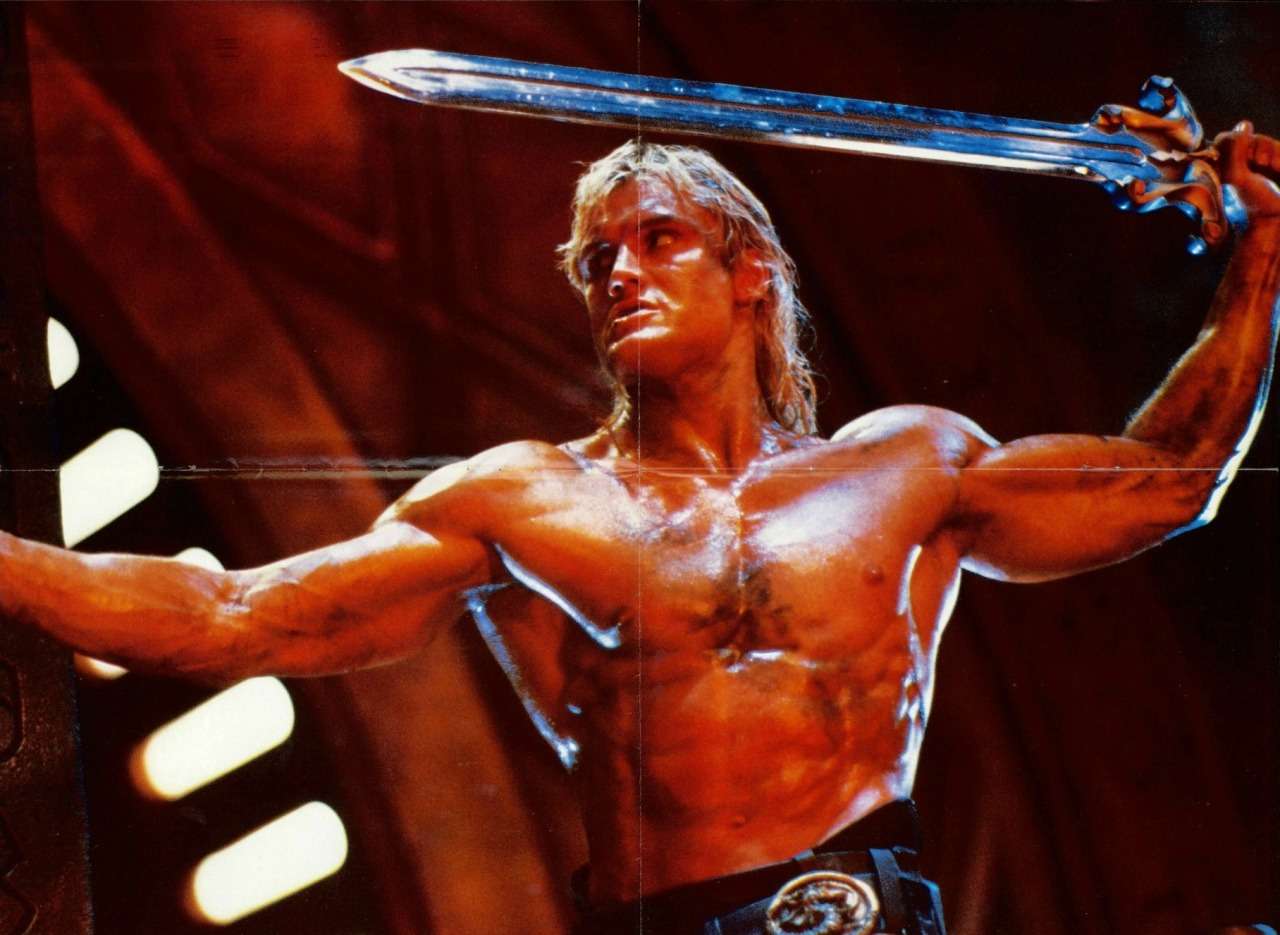
Despite his heavy Swedish accent, Goddard and Cannon Films chose Dolph for the role due of his physical appearance. He was a perfect fit for the role of He-Man, standing 6’5″ tall. His body was also well-sculpted and muscular.
This posed some unanticipated challenges for the filmmakers. Finding someone who could potentially equal his body wasn’t simple. Because of Dolph’s skimpy clothing throughout the film, finding a stuntman who could pass as him was much more difficult. Naturally, it was determined that Dolph would do all of the stunts in the movie himself.
But he was a master athlete and a trained kickboxer, so it wasn’t a big deal. Despite his tall height, he had the required strength and speed. However, a few of his action sequences look rather dodgy, and it should be blamed on Cannon Films itself. The production company failed to give enough time to Dolph’s training.
Snake Mountain Was Originally Set to Appear
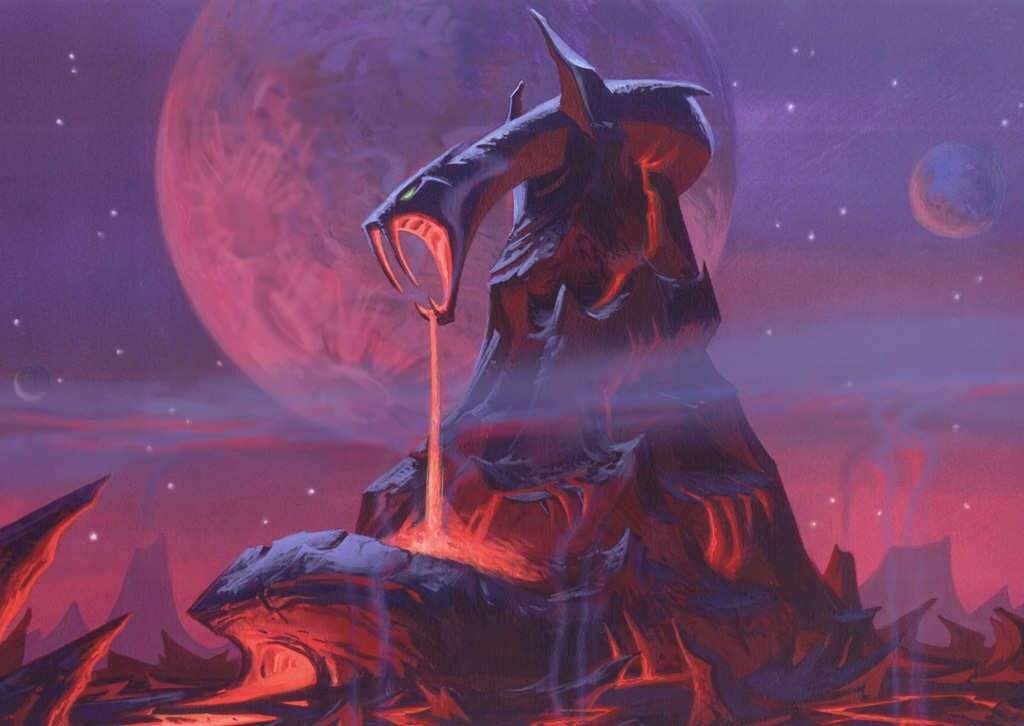
The list of items from the comics that were left out of the live-action picture seems to go on forever. He-Man was supposed to spend more time on the planet Eternia in the script. The planet Eternia is home to several species and humanoid races, including the Snake Men, Reptile Men, Fire People, and Tree People, as well as He-Man.
The film, on the other hand, spends far too much time on Earth, which has been a subject of criticism. The majority of the filming took place in general locales rather than exotic Eternia-like locations, with the exception of two sequences that took place inside Castle Grayskull. This was done to ensure that money was spent wisely.
The saddest result of these budgetary problems was the elimination of Snake Mountain as Skeletor’s hideout. Snake Mountain was a beautiful but scary crag that was wrapped around in spirals by a giant python, with lava flowing from its mouth. Although William Stout had devised a plan to bring this magnificent area to life, the plan was dropped because it would have been expensive.
A sequel set on a post-apocalyptic Earth was planned, and Dolph Lundgren is replaced by a professional surfer
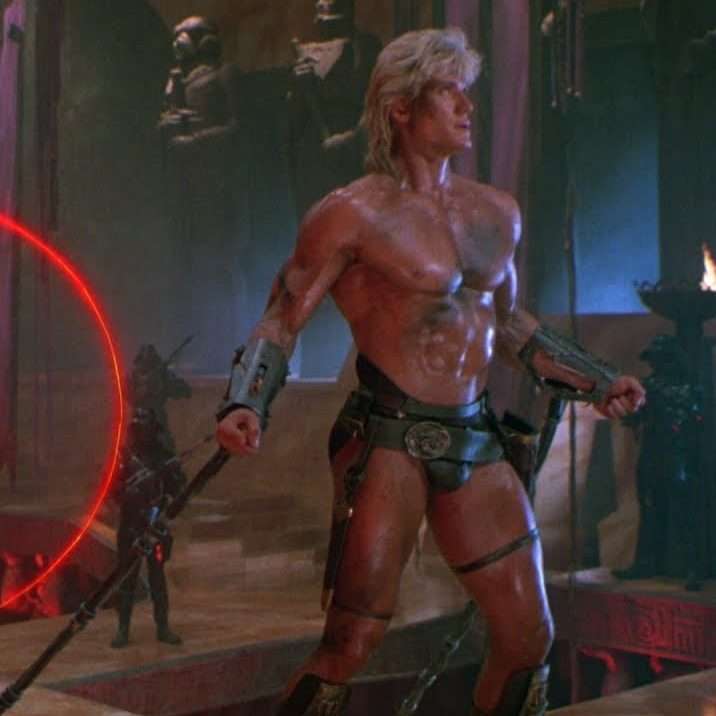
Frank Langella declared and stated his enthusiasm for the role of Skeletor. It was partly because his young son was a huge fan of the He-Man cartoons and would run around the house shouting phrases from them.
Mr. Lundgren, on the other hand, never expressed Langella’s feelings. In an interview, he admitted that he felt silly playing his part. Cannon Films was well aware of the situation.
They were working on a sequel for the Masters of the Universe and enlisted the help of a professional surfer named Laird Hamilton to fill the gap left by Dolph Lundgren’s sword dropping. However, the film was axed in the pre-production stage due to the giant losses suffered from the back-to-back failures of Superman IV: The Quest for Peace and Masters of the Universe.
Sets and costumes made for the sequel were used in Cyborg
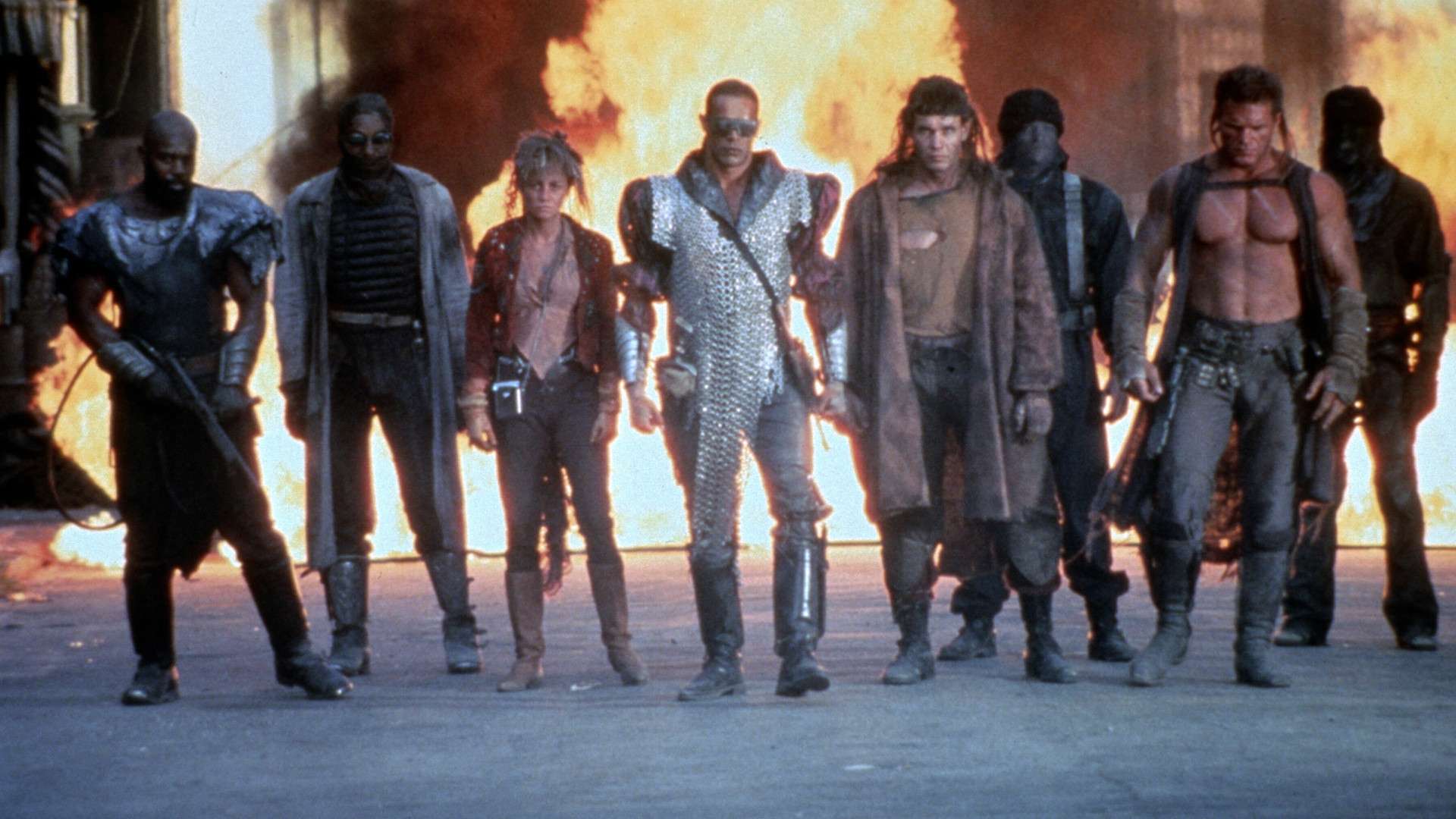
Cannon Films began and grew to prominence by making action-packed B-movies such as Death Wish. However, during the late 1980s, the production firm desired to expand. As a result, they began to make more expensive pictures, such as the $25 million Life Force and the 1987 Over The Top, which starred Sylvester Stallone as the Italian Stallion.
They also published Superman IV: The Quest for Peace and Masters of the Universe in 1987. These films have a total budget of more than $100 million. So, even before Masters of the Universe was released, producer Menahem Globus announced a sequel at the Cannes Film Festival.
They hired director Albert Pyun who had given hit B-Movies like The Sword And The Sorcerer and Alien From LA. Pre-production had started and they spent $2 million on the sets and costumes of a Spiderman film and Masters of the Universe 2. But 1987 wasn’t their year and they had to cancel both projects. However, they couldn’t afford just to dump the expensive sets and costumes.
So, Cannon instead contacted Pyun and asked him to write a script that could use the leftovers from two unmade films. In this strange turn of events, Masters of the Universe 2 and Spiderman were merged and converted into an action-packed cyberpunk film called Cyborg starring the Muscles from Brussels.
